Abstract
1. In the lizard Tiliqua the tendons of the caudo-femoralis muscle are supplied by a nerve which runs separately from the muscle nerve. 2. Recordings of afferent discharges in the tendon nerve revealed the presence in the tendon of stretch-sensitive mechanoreceptors which responded to both passive changes in limb position and to muscle contraction. 3. A preparation of the tendon and its nerve were dissected free of surrounding tissue and studied in isolation while recording the activity of single functional units. The minimum tension in the tendon necessary for a maintained response from a receptor lay in the range 5-35 g (mean 16 g) and the firing rates at these tensions were in the range 5-14 impulses/sec (mean 9 impulses/sec). 4. Receptors showed a steep increase in firing rate with increase in tension up to about 120 g. The firing rate 30 sec after the onset of a tension change did not exceed 40 impulses/sec. 5. During the tension change the receptor responded with a burst of impulses whose frequency depended on the velocity of stretch. With large, rapidly rising tension steps peak firing rates of up to 300 impulses/sec were observed. 6. Tension and length changes recorded during rapid tendon-stretches were very similar, with little sag in tension at the new length. The response of all units however continued to fall throughout the stretch. Some of the possible causes of this adaptation have been discussed.
Full text
PDF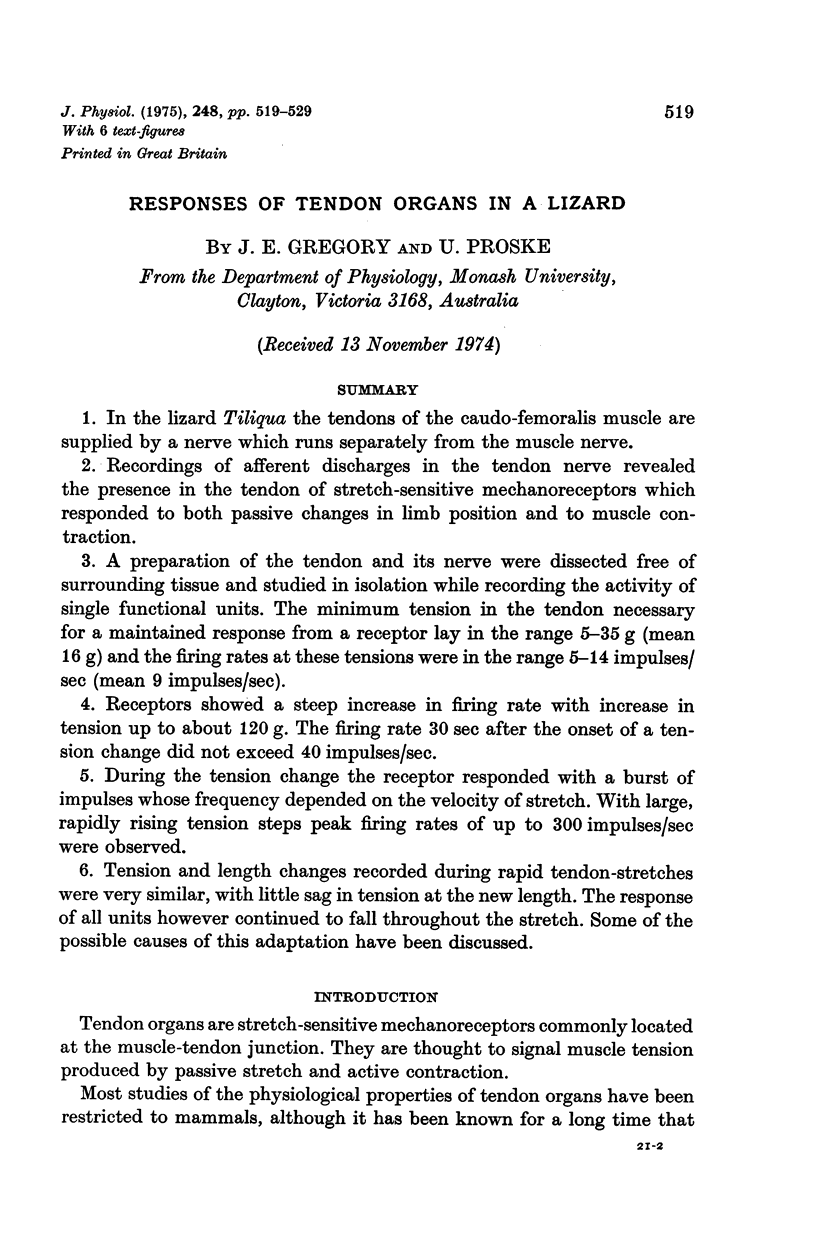
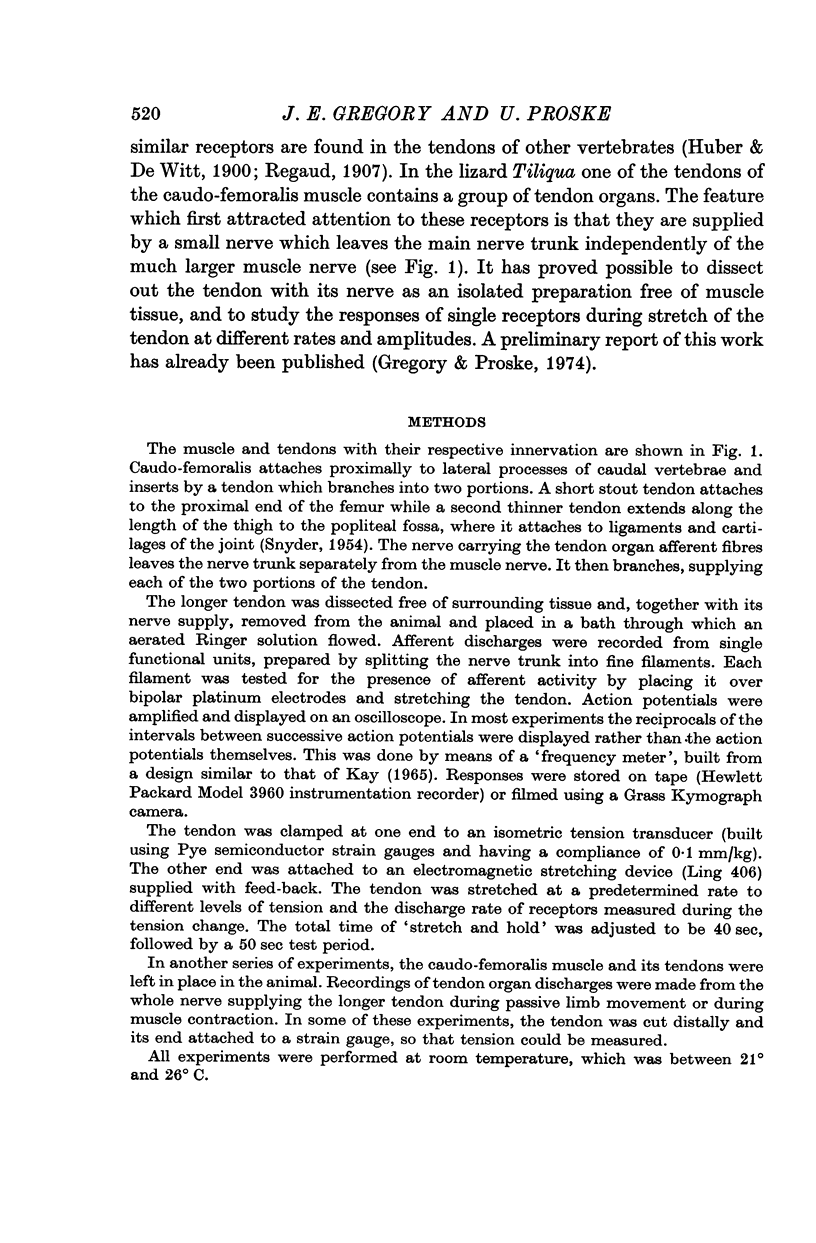
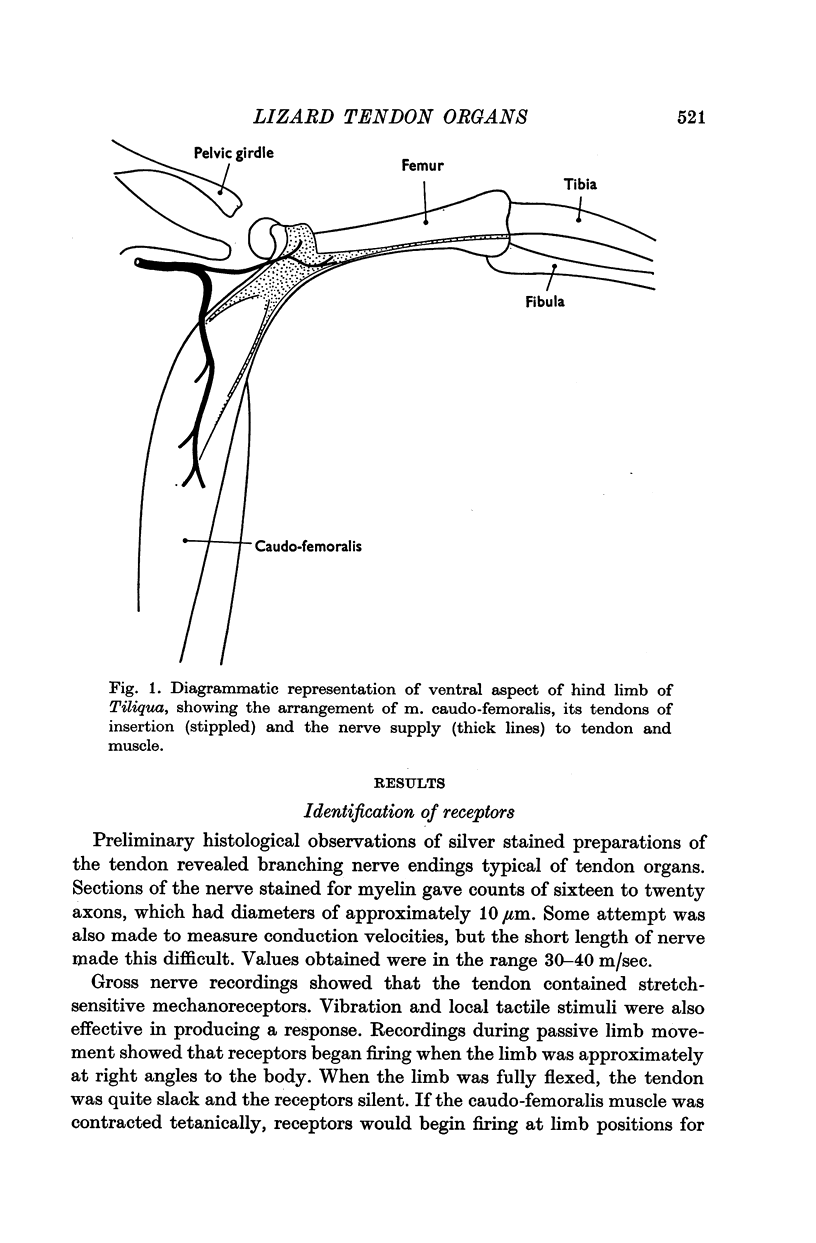
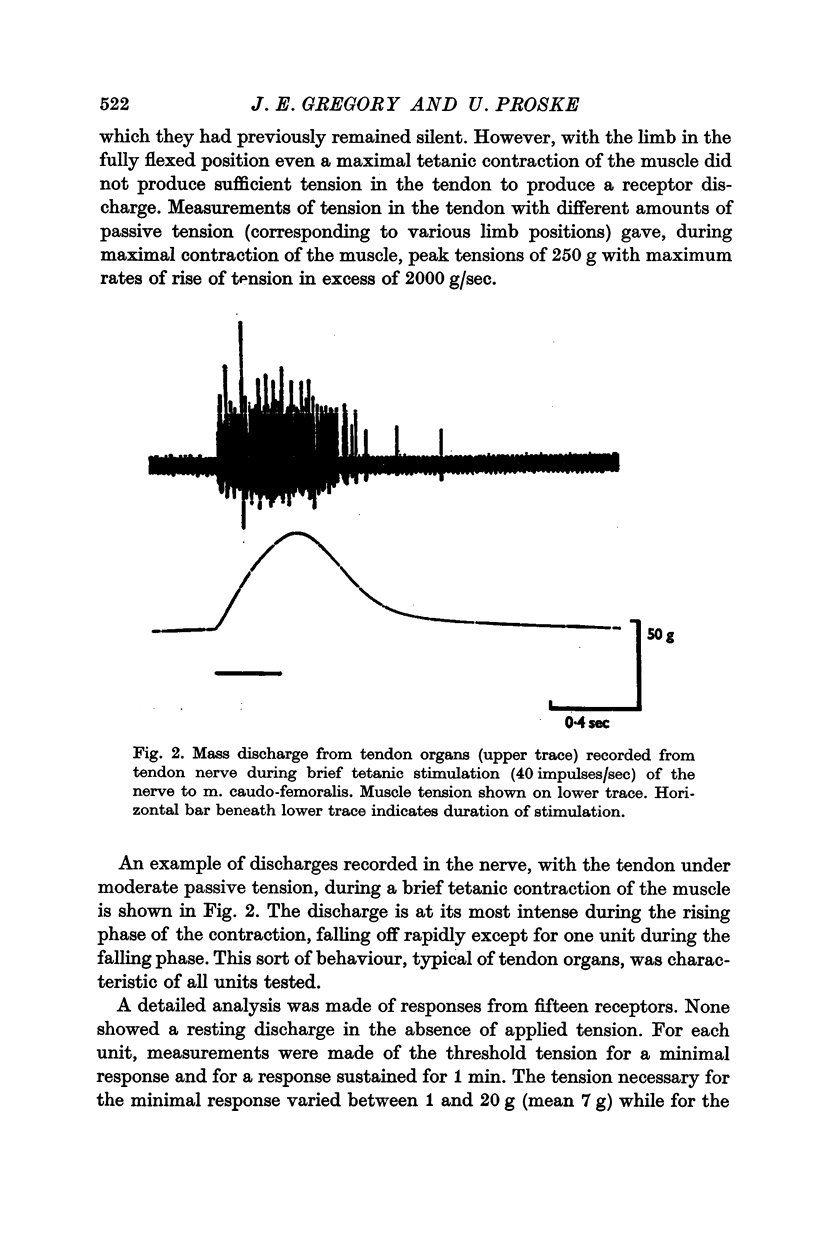
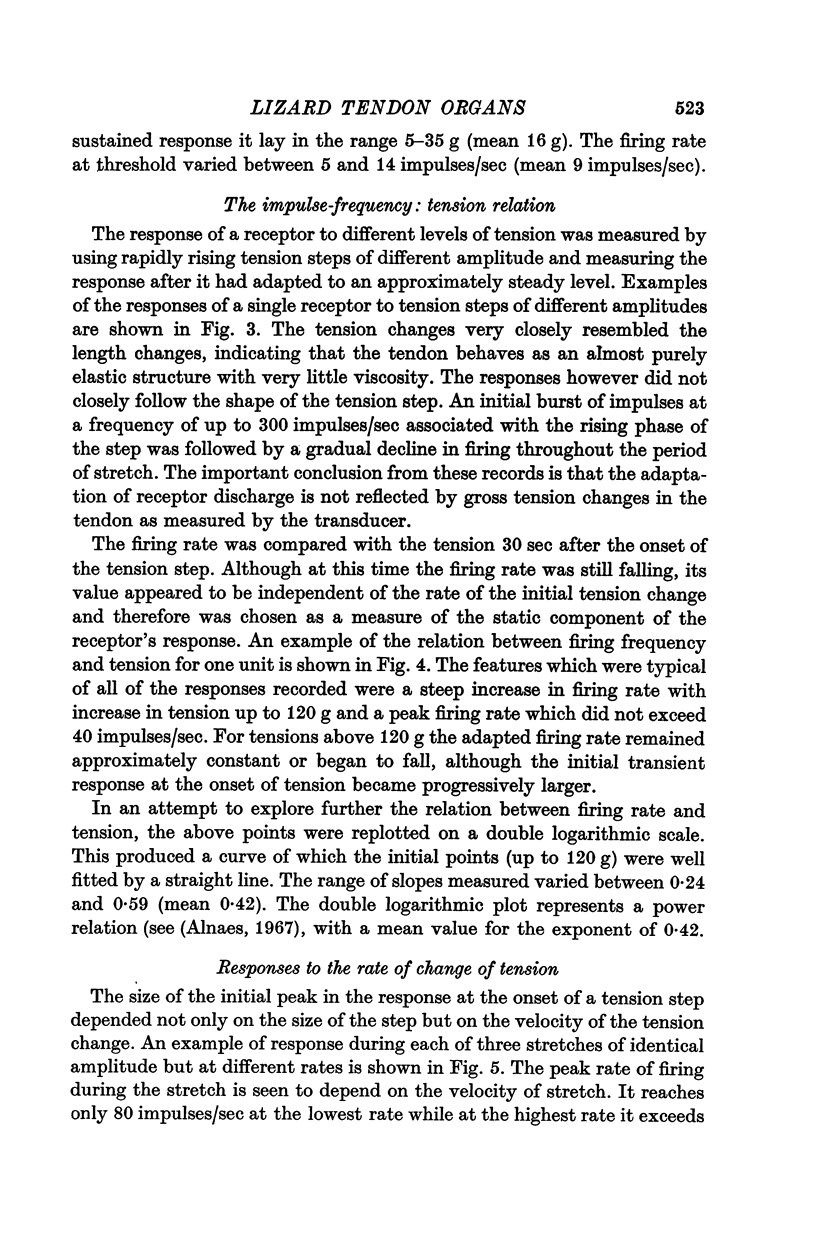
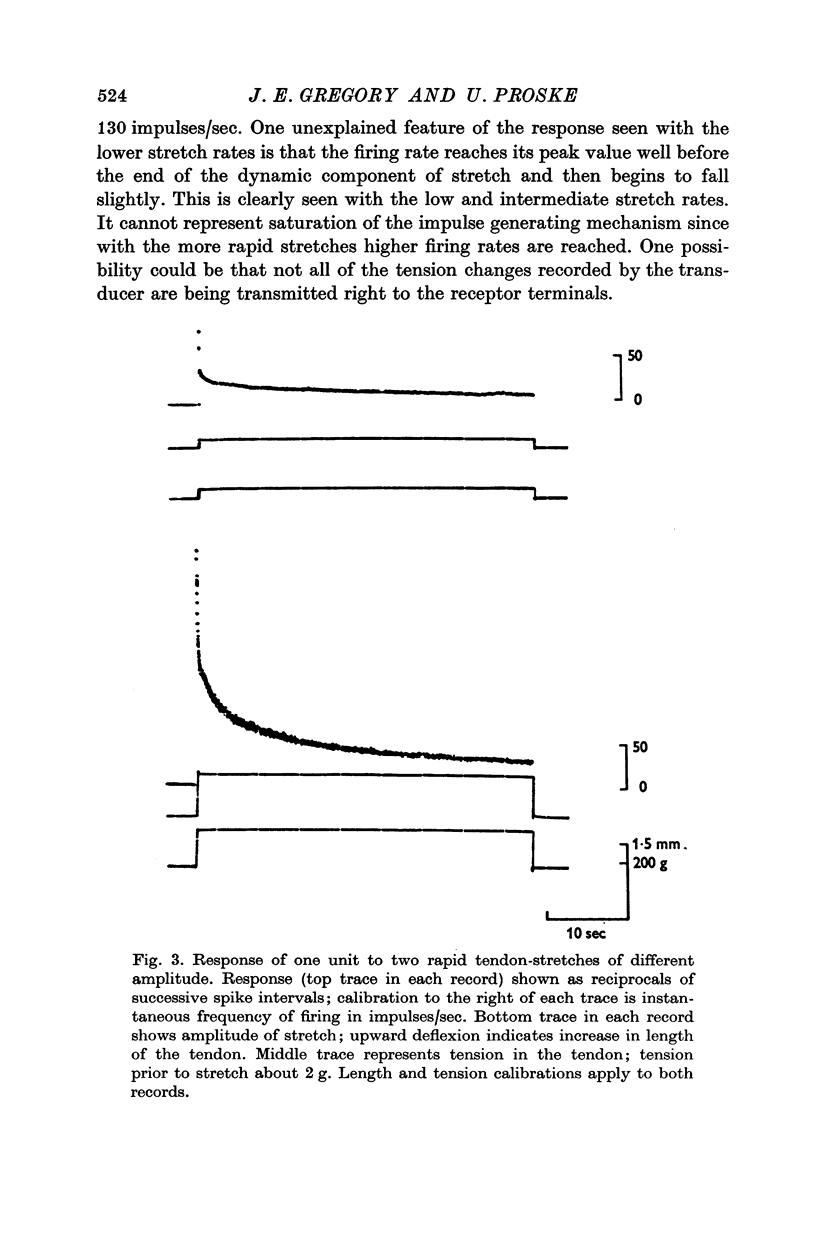

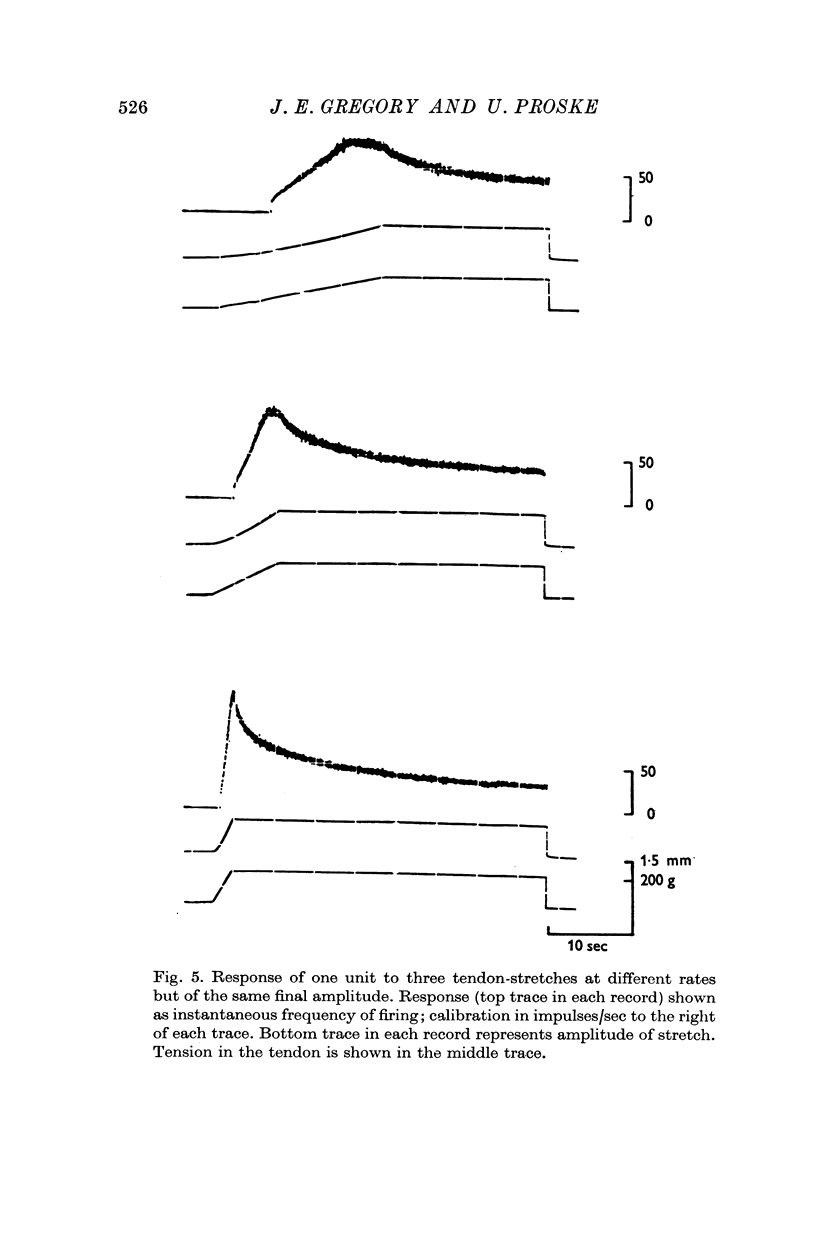

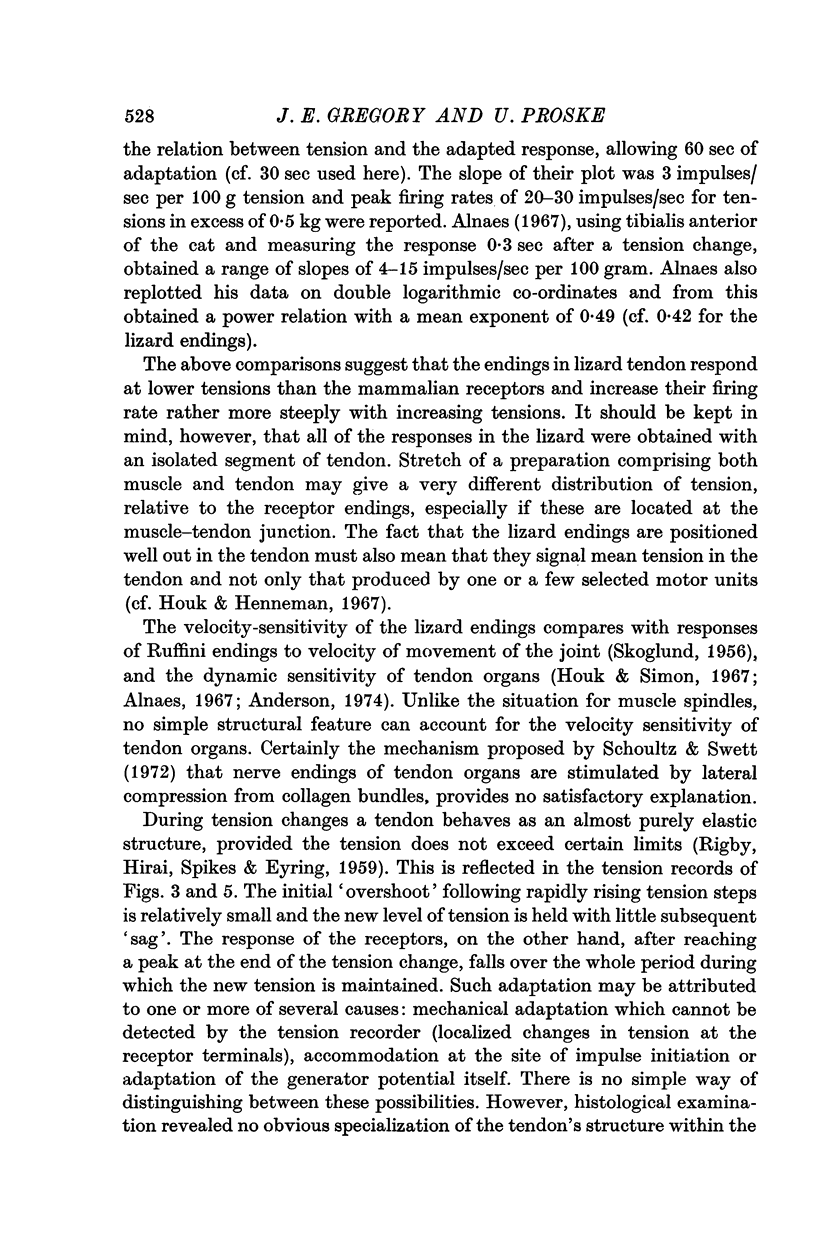
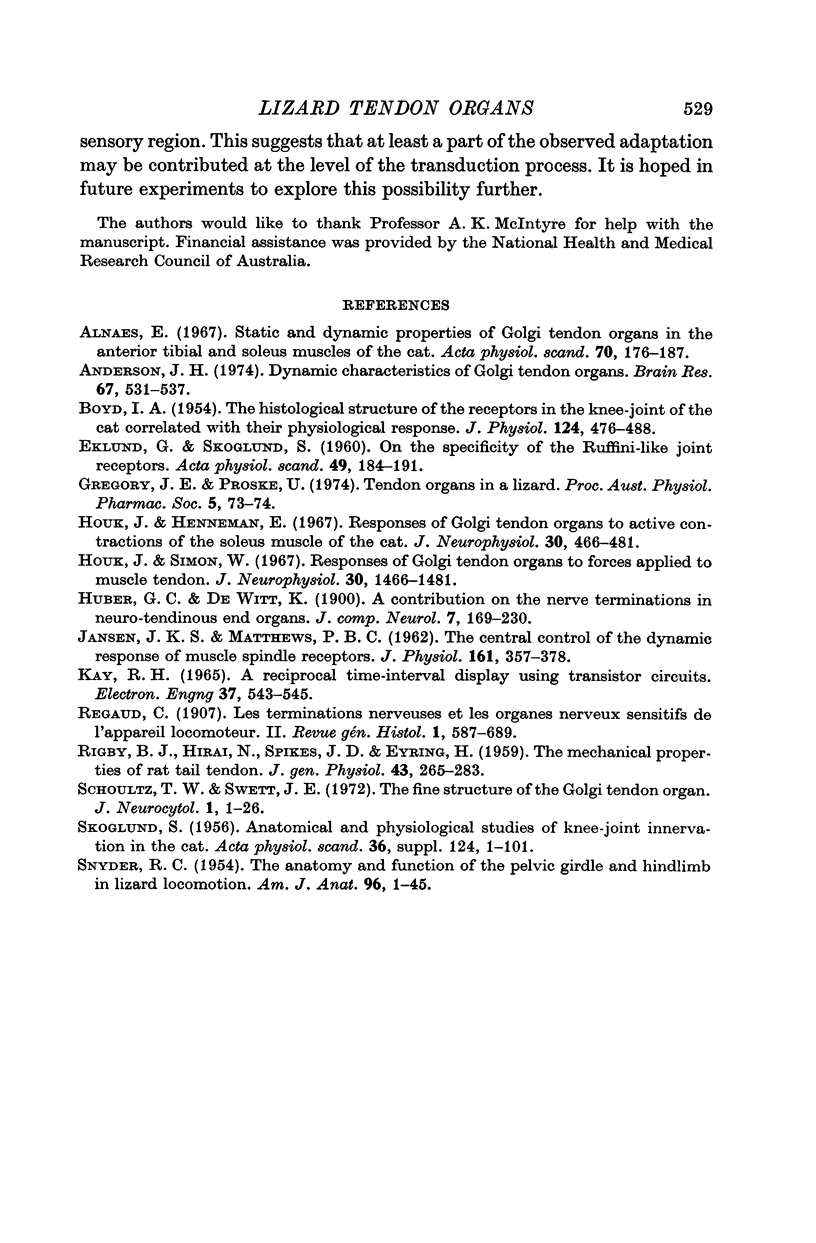
Selected References
These references are in PubMed. This may not be the complete list of references from this article.
- Anderson J. H. Dynamic characteristics of Golgi tendon organs. Brain Res. 1974 Mar 8;67(3):531–537. doi: 10.1016/0006-8993(74)90501-0. [DOI] [PubMed] [Google Scholar]
- BOYD I. A. The histological structure of the receptors in the knee-joint of the cat correlated with their physiological response. J Physiol. 1954 Jun 28;124(3):476–488. doi: 10.1113/jphysiol.1954.sp005122. [DOI] [PMC free article] [PubMed] [Google Scholar]
- EKLUND G., SKOGLUND S. On the specificity of the Ruffini like joint receptors. Acta Physiol Scand. 1960 Jul 15;49:184–191. doi: 10.1111/j.1748-1716.1960.tb01942.x. [DOI] [PubMed] [Google Scholar]
- Houk J., Henneman E. Responses of Golgi tendon organs to active contractions of the soleus muscle of the cat. J Neurophysiol. 1967 May;30(3):466–481. doi: 10.1152/jn.1967.30.3.466. [DOI] [PubMed] [Google Scholar]
- Houk J., Simon W. Responses of Golgi tendon organs to forces applied to muscle tendon. J Neurophysiol. 1967 Nov;30(6):1466–1481. doi: 10.1152/jn.1967.30.6.1466. [DOI] [PubMed] [Google Scholar]
- JANSEN J. K., MATTHEWS P. B. The central control of the dynamic response of muscle spindle receptors. J Physiol. 1962 May;161:357–378. doi: 10.1113/jphysiol.1962.sp006892. [DOI] [PMC free article] [PubMed] [Google Scholar]
- SKOGLUND S. Anatomical and physiological studies of knee joint innervation in the cat. Acta Physiol Scand Suppl. 1956;36(124):1–101. [PubMed] [Google Scholar]
- SNYDER R. C. The anatomy and function of the pelvic girdle and hindlimb in lizard locomotion. Am J Anat. 1954 Jul;95(1):1–45. doi: 10.1002/aja.1000950102. [DOI] [PubMed] [Google Scholar]


